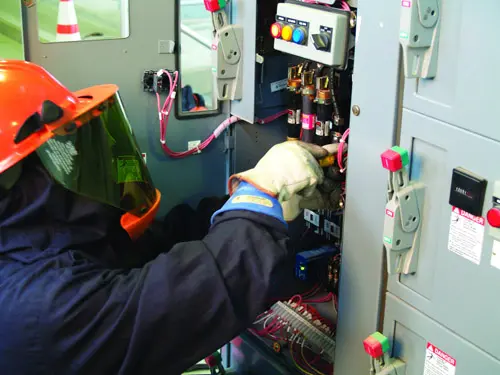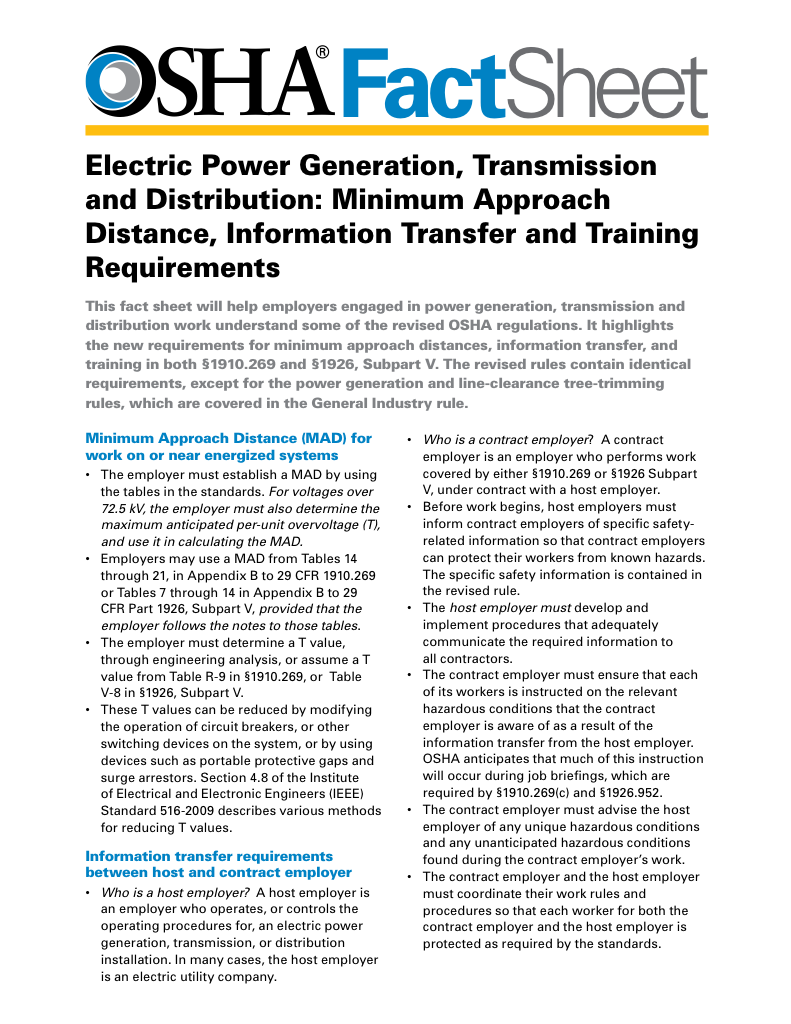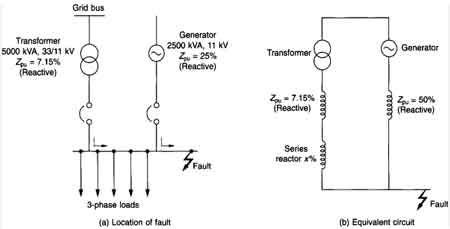Arc Flash Safety Gear
By R.W. Hurst, Editor

CSA Z462 Arc Flash Training - Electrical Safety Essentials
Our customized live online or in‑person group training can be delivered to your staff at your location.

- Live Online
- 6 hours Instructor-led
- Group Training Available
Download Our OSHA 3873 Fact Sheet – Minimum Approach Distance and Training Requirements

- Calculate MAD using voltage and overvoltage values
- Ensure proper communication between host and contract employers
- Meet OSHA training requirements for qualified electrical workers
Arc flash safety gear protects workers from electrical arc hazards with flame-resistant clothing, insulated gloves, and face shields. Essential for NFPA 70E and CSA Z462 compliance, it reduces burn risk, improves safety, and meets PPE category requirements.
What is Arc Flash Safety Gear?
Arc flash safety gear comprises specialized personal protective equipment (PPE) designed to shield workers from the intense heat, light, and pressure of electrical arc flash incidents. It:
✅ Protects against extreme heat, burns, and shock during arc flash events
✅ Includes flame-resistant clothing, insulated gloves, face shields, and PPE kits
✅ Ensures compliance with NFPA 70E, CSA Z462, and workplace safety standards
Request a Free Training Quotation
Why Arc Flash Safety Gear Matters
Electrical workers face unique risks during electrical explosions, where temperatures can exceed 40,000°F. While suits and clothing provide body protection, flame-resistant gear targets exposed areas, such as hands, face, and feet. These accessories are designed to resist thermal energy, measured in arc ratings (AR) (cal/cm²), and prevent burns or injuries. This article details the role of arc flash accessories, their performance standards, and how to choose gear that aligns with your workplace hazards. For a deeper dive into compliance, explore our arc flash PPE requirements to ensure your gear meets industry standards.
For instance, a face shield rated at 8 cal/cm2 protects against Category 2 hazards, while insulated gloves guard against shock and heat. Each piece must meet NFPA 70E standards, ensuring reliability under stress. To select the appropriate protective clothing, visit our guide on Arc Flash Clothing, which outlines flame-resistant and arc-rated apparel.
PPE is critical for protection, safeguarding workers from the intense heat of an electrical explosion, which can exceed 40,000°F. Gear like a flame-resistant face shield, compliant with ASTM F1506, ensures durability and safety. For instance, PPE rated at 12 cal suits lower-risk tasks, while 25 cal/cm2 and 40 cal/cm2 gear protect against higher hazards, aligning with NFPA 70E standards. Each PPE category dictates specific arc ratings to match the job’s risk level, ensuring comprehensive defence against incidents.
FREE EF Electrical Training Catalog
Download our FREE Electrical Training Catalog and explore a full range of expert-led electrical training courses.

- Live online and in-person courses available
- Real-time instruction with Q&A from industry experts
- Flexible scheduling for your convenience
This gear isn’t just about compliance—it’s about survival. A single weak link, such as an unrated glove, can compromise safety. Choosing the right accessories requires understanding your worksite’s hazard level, which is often outlined in a risk assessment. To explore how hazard levels guide gear selection, see our arc flash PPE categories.
Arc flash PPE is critical for arc flash protection, safeguarding workers from the intense heat of an electric arc, which can exceed 40,000°F. Gear like a flame-resistant face shield, compliant with ASTM F1506, ensures durability and safety. For instance, PPE rated at 12 cal suits lower-risk tasks, while 25 cal/cm² and 40 cal/cm² gear protect against higher hazards, aligning with NFPA 70E standards. Each PPE category dictates specific arc ratings to match the job’s risk level, ensuring comprehensive defence against arc flash incidents. Learn how each PPE component contributes to overall safety on our PPE Performance page.
Arc Flash Accessories: Key Components
The term “arc flash safety gear” often refers to arc flash accessories—specialized items that enhance primary PPE. These components are critical for full-body protection and include:
-
Insulated Gloves: AR for flash and electrical shock, these protect hands during live work. Look for ASTM D120-compliant gloves with arc ratings matching your hazard level.
-
Face Shields: AR shields (e.g., 12 cal/cm²) guard the face and eyes from heat and debris, often paired with balaclavas for neck coverage.
-
Hoods: Covering the head and neck, hoods like those rated at 40 cal/cm² are essential for Category 4 tasks. They integrate with suits for seamless protection.
-
Safety Boots: Dielectric boots prevent shock and resist heat, meeting ASTM F2413 standards.
-
Ear Protection: AR earplugs or muffs reduce blast noise, a lesser-known risk.
Each accessory must be AR and compatible with your PPE system. For example, a hood must align with a 40 cal arc flash suit for high-risk jobs. Mixing unrated items can create gaps in protection, so always verify certifications. For detailed information on suits specifically designed for severe hazards, check our 100 Cal Arc Flash Suit page.
Arc Flash Safety Gear Comparison Table
| Accessory | Purpose | Standard(s) | Arc Rating Example |
|---|---|---|---|
| Flame-Resistant (FR) Coveralls | Protects entire body from burns caused by arc flash heat | NFPA 70E, CSA Z462, ASTM F1506 | 8–12 cal/cm² |
| Insulated Rubber Gloves | Prevents electrical shock and hand burns during energized work | ASTM D120, NFPA 70E | Class 0 – 14 cal/cm² |
| Arc-Rated Face Shield | Protects face and eyes from thermal energy and flying debris | ASTM F2178, NFPA 70E | 12 cal/cm² |
| Balaclava (Arc Hood) | Shields head, neck, and face from arc heat and flames | NFPA 70E, ASTM F1506 | 8–10 cal/cm² |
| Arc-Rated Jacket | Adds extra protection for torso in higher-risk tasks | NFPA 70E, CSA Z462, ASTM F1506 | 20 cal/cm² |
How Arc Flash Accessories Are Tested
Accessories undergo strict testing to ensure they perform under extreme conditions. Standards like ASTM F2178 (face shields) and ASTM D120 (gloves) simulate explosions, measuring heat resistance and durability. Labs expose gear to incident energy, assessing:
-
Arc Rating: How much energy (cal/cm²) the accessory can block.
-
Ignition Resistance: Whether it catches fire or melts.
-
Shock Protection: For gloves and boots, insulation against electrical current.
For instance, a 25 cal/cm² hood must shield the head without tearing, while gloves are tested for puncture resistance. These tests align with broader safety protocols, detailed in our NFPA 70E PPE requirements. Regular inspections—checking for wear, cracks, or contamination—ensure accessories remain effective.
Choosing the Right Arc Flash Safety Gear
Selecting the right gear starts with a hazard analysis, which identifies your worksite’s cal/cm² risk level. Accessories must match this rating and integrate with primary PPE. Consider these factors:
-
Compatibility: Ensure gloves fit under suit sleeves, or hoods align with face shields.
-
Comfort: Lightweight shields or breathable gloves reduce fatigue during long shifts.
-
Certifications: Look for NFPA 70E, ASTM, or ANSI labels on every piece.
-
Maintenance: Clean and store gear according to manufacturer guidelines to preserve the AR.
For quick reference, our Arc Flash PPE Requirements Chart maps gear to hazard levels. Don’t skimp on quality—unrated accessories can fail when it matters most.
Checklist: Gear Essentials
☑ AR gloves (ASTM D120-compliant)
☑ Face shield or hood (8+ cal/cm²)
☑ Dielectric boots (ASTM F2413)
☑ Ear protection (ANSI-rated)
☑ Matches hazard level (Category 1–4)
Related Articles:







